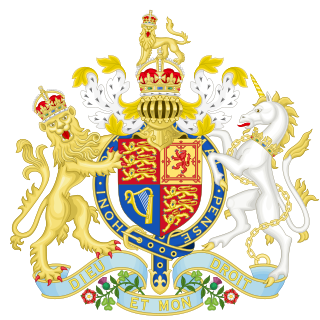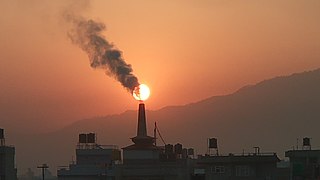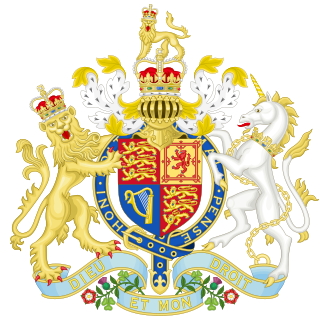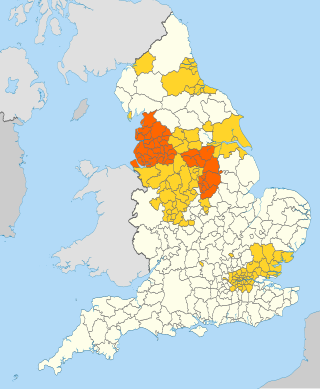
The Controlled Substances Act (CSA) is the statute establishing federal U.S. drug policy under which the manufacture, importation, possession, use, and distribution of certain substances is regulated. It was passed by the 91st United States Congress as Title II of the Comprehensive Drug Abuse Prevention and Control Act of 1970 and signed into law by President Richard Nixon. The Act also served as the national implementing legislation for the Single Convention on Narcotic Drugs.

The Wildlife and Countryside Act 1981 is an Act of Parliament in the United Kingdom implemented to comply with European Council Directive 79/409/EEC on the conservation of wild birds. In short, the act gives protection to native species, controls the release of non-native species, enhances the protection of Sites of Special Scientific Interest and builds upon the rights of way rules in the National Parks and Access to the Countryside Act 1949. The Act is split into 4 parts covering 74 sections; it also includes 17 schedules.

The International Convention for the Prevention of Pollution from Ships, 1973 as modified by the Protocol of 1978, or "MARPOL 73/78" is one of the most important international marine environmental conventions. It was developed by the International Maritime Organization with an objective to minimize pollution of the oceans and seas, including dumping, oil and air pollution.

The Misuse of Drugs Act 1971 is an act of the Parliament of the United Kingdom. It represents action in line with treaty commitments under the Single Convention on Narcotic Drugs, the Convention on Psychotropic Substances, and the United Nations Convention Against Illicit Traffic in Narcotic Drugs and Psychotropic Substances.

The Controlled Substances Penalties Amendments Act of 1984, 98 Stat. 2068, generally enhanced the penalties for violations of the Comprehensive Drug Abuse Prevention and Control Act of 1970. The 1984 legislation removed an ambiguity in the then-existing law by providing that a State drug felony conviction would trigger the provisions enhancing penalties for recidivists; it went further by providing that a Foreign drug felony conviction would have the same effect. Finally, the 1984 legislation doubled the penalties for distribution of controlled substances where the offense is committed on or within 1,000 feet of school property.
Building regulations in the United Kingdom are statutory instruments or statutory regulations that seek to ensure that the policies set out in the relevant legislation are carried out. Building regulations approval is required for most building work in the UK.

The Insolvency Act 1986 is an act of the Parliament of the United Kingdom that provides the legal platform for all matters relating to personal and corporate insolvency in the UK.
The history of fire safety legislation in the United Kingdom formally covers the period from the formation of the United Kingdom of Great Britain and Ireland in 1801 but is founded in the history of such legislation in England and Wales, and Scotland before 1708, and that of the Kingdom of Great Britain from 1707 to 1800.

Energy performance certificates (EPCs) are a rating scheme to summarise the energy efficiency of buildings. The building is given a rating between A - G (Inefficient). The EPC will also include tips about the most cost-effective ways to improve the home energy rating. Energy performance certificates are used in many countries.
A building control body is an organisation authorised to control building work that is subject to the Building Regulations in England and Wales (similar systems are provided in Northern Ireland, and in Scotland where the term 'building standards' is used. Such regulations or standards are also known as building codes in other parts of the world.

The drug policy in the United States is the activity of the federal government relating to the regulation of drugs. Starting in the early 1900s, the United States government began enforcing drug policies. These policies criminalized drugs such as opium, morphine, heroin, and cocaine outside of medical use. The drug policies put into place are enforced by the Food and Drug Administration and the Drug Enforcement Administration. Classification of Drugs are defined and enforced using the Controlled Substance Act, which lists different drugs into their respective substances based on its potential of abuse and potential for medical use. Four different categories of drugs are Alcohol, Cannabis, Opioids, and Stimulants.

The Health Protection (England) Regulations 2020 is a statutory instrument (SI) enacted on 4 July 2020 by the Secretary of State for Health and Social Care, Matt Hancock, in response to the COVID-19 pandemic. It replaced and relaxed the previous Lockdown Regulations, and gave the Secretary of State powers to make declarations restricting access to public outdoor places.

The Health Protection (England) Regulations 2020 is a statutory instrument (SI) brought into force on 23 July 2020 by the Secretary of State for Health and Social Care, Matt Hancock, in response to the COVID-19 pandemic. Subject to some exceptions, it required members of the public in England to wear a face covering in most indoor shops, shopping centres, banks, post offices and public transport hubs. The regulations were similar to the Health Protection (England) Regulations 2020, which were brought into force on 15 June 2020. The regulations were revoked on 18 July 2021, five days before they would otherwise have expired.

During the COVID-19 pandemic, a variety of lockdown regulations were enforced in England by way of statutory instrument. Most covered the whole country, but some focused on local areas of particular concern. Leicester was the first area to be subject to local restrictions, on 4 July 2020, and many other regions were added over the subsequent three months.

The Health Protection (England) Regulations 2020 is a statutory instrument (SI) made on 2 June 2020 by the Secretary of State for Health and Social Care, Matt Hancock, in response to the COVID-19 pandemic. The regulations aimed to reduce the possibility of infection spreading from travellers from overseas. They imposed requirements from 8 June 2020 on certain categories of travellers arriving in England from outside the Common Travel Area. Travellers falling within the regulations had to provide specified information on entry, and some had to undergo a fourteen-day period of self-isolation.

The Health Protection (Self-Isolation) (England) Regulations 2020 is a statutory instrument (SI) made on 27 September 2020 by the Secretary of State for Health and Social Care, Matt Hancock, in response to the COVID-19 pandemic. They are sometimes referred to as the Self-Isolation Regulations.

On 14 October 2020, the UK Government abandoned its attempts to control the spread of SARS-CoV-2 by means of piecemeal local regulations and introduced a three-tier approach across England, with legal restrictions varying according to government-defined tiers. Tier 1 restrictions were referred to as 'Local COVID Alert Level Medium', with tier 2 being 'Local COVID Alert Level High' and tier 3 'Local COVID Alert Level Very High'. The restrictions were enforced by three English statutory instruments, as follows:

The Health Protection (England) Regulations 2020 is an English emergency statutory instrument that replaced the second lockdown regulations from 2 December 2020. As initially made, it brought back the three-tier legal framework first introduced by the first COVID-19 tier regulations in England, but with changes to the restrictions within each tier. The regulations are sometimes referred as the "second tier regulations" or the "all tiers regulations".

The Health Protection (Steps) (England) Regulations 2021 is an English emergency statutory instrument which replaced the Health Protection (England) Regulations 2020 from 29 March 2021. Initially, all of England was subject to Step 1 restrictions. Step 2 applied from 12 April 2021 and Step 3 from 17 May 2021. The regulations were originally set to expire on 30 June 2021, but that was later extended to the end of 18 July 2021. They were revoked on the latter date.

The Health Protection (England) Regulations 2021 is a statutory instrument (SI) made on 14 May 2021 by the Secretary of State for Health and Social Care, Matt Hancock, in response to the COVID-19 pandemic. The regulations aimed to reduce the possibility of infection spreading from travellers from overseas. They revoked and replaced the Health Protection (England) Regulations 2020, and introduced a new set of requirements for international travellers who arrived in England having begun their journey outside the Common Travel Area (CTA), as well as travellers arriving from within the CTA who had been outside the CTA in the 10 days preceding their arrival. Travellers arriving in England who had remained entirely within the CTA during the preceding 10 days were mostly not affected.








